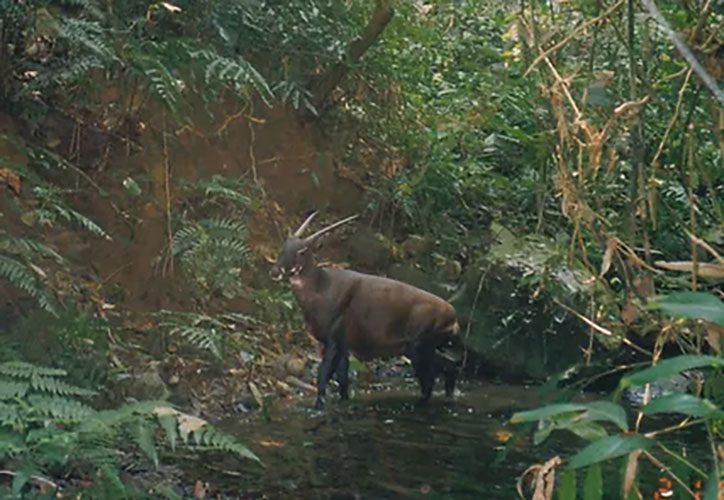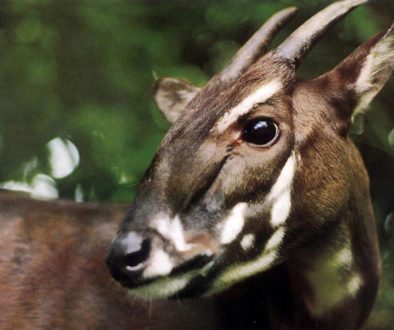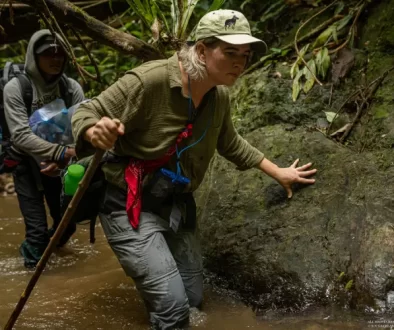Why I believe in Saola conservation
Notes from the field on the status of Saola in 2020
Rob Timmins, Saola Foundation Chief Technical Advisor, March 2020
Rob is one of the world’s leading authorities on wildlife in mainland southeast Asia. Specifically, he is the world’s most experienced wildlife surveyor in the Saola’s range of the Annamite Mountains. Over the past 25 years, Rob has been involved in the discovery or rediscovery of several species of elusive birds and mammals in the Annamite Mountains and Indochina more widely. He is applying his expertise to guide the search for Saola in the Lao PDR.
One of the first questions many supporters ask me is, Do I think there is still a chance to save Saola? My answer is a definite “yes”, and I’d like to explain why, based on evidence from the field.
The most recent verified physical evidence of a living wild Saola is a photograph taken in 2013 by an automatic camera-trap in Vietnam. More recently, in 2018, researchers found a trophy of a dead Saola on the wall of a hunter’s house near a national park in Vietnam, from an animal which was reportedly killed in 2016. Additional evidence of the persistence of Saola, in areas we have identified as having a high probability of their continued survival, is the continued detection of other hunting sensitive species, such as Sambar, Large-antlered Muntjac and Hog Badger. Scientific logic dictates that if these species, which are also highly susceptible to wildlife snaring, and which are targeted by wildlife poachers, have not yet been extirpated, then the same may be true for Saola (a species which is seldom specifically targeted by poachers, since it has little value in the wildlife trade). Credible reports of continued Saola presence continue to be received from multiple areas, the most promising of which are in areas where conditions suggest high likelihood of continued Saola presence.
Based on evidence collected to-date, especially the paucity of evidence from systematically collected field data and the severity and extent of snaring, I estimate that perhaps less than 100 Saolas remain in the wild, scattered as individuals throughout the Annamite Mountains. This means that the density of Saola (i.e., individuals/km2) is minuscule, with a similarly miniscule chance of detecting any one individual, without an intensive, persistent search effort. In the dense tropical forests where Saolas live, the hoofprints, nibbled leaves, and dung piles they leave are very difficult to identify with certainty, and are easily overlooked by even the most experienced wildlife trackers. Camera-traps, a valuable monitoring tool, rely on the probability of an individual crossing within the path and range of a sensor, a few metres square in most cases. The odds of detection by any single camera trap are extremely low for a species at such low density, and which lives in such dense habitat. In this current effort, finding our first Saola is akin to looking for a needle in a hundred haystacks, blindfolded, and without the aid of a magnet! The good news is that once that first individual has been found, we can rapidly advance our ability to find subsequent Saolas, by monitoring that individual, to learn from its behavior, by documenting the characteristics of the signs it deposits (hoofprints, feeding signs, dung), and by collecting dung samples that could be used to train scent detection dogs.
The paucity of evidence of wild Saola, a symptom of the species’ general elusiveness coupled with its current rarity, represents a major risk to this species’ survival. Increasingly, some donors are reluctant to provide the resources necessary for an adequate Saola detection effort because…there has been no recent Saola detection. This is a potentially fatal Catch-22 for Saola –it risks manifesting a self-fulfilling prophecy of Saola’s extinction.
Instead, determination, courage and hope are needed, while Saola still has time. And I am convinced sufficient time remains. All we need is the support and resources to get this done.
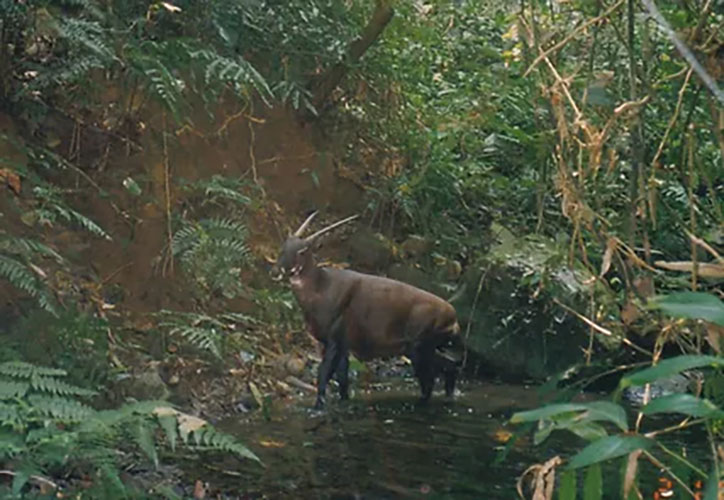
The last camera-trap photo of a Saola was taken in 2013. The individual pictured here was detected in Lao PDR, 1999
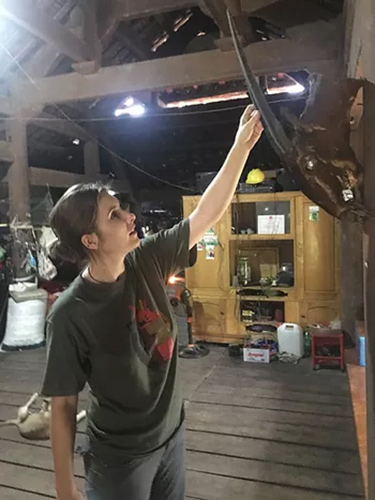
A trophy of a Saola killed in 2016
Why is it not too late?
The Saola is on the precipice of joining an infamous group of species that have been hunted to extinction, including the Dodo, Stellar’s Sea Cow, Great Auk, Passenger Pigeon, Caribbean Monk Seal and, closer to the Saola’s home, Kouprey. However, human intervention has spectacularly averted the extinction of some other species. Madagascar’s Pink Pigeon is a classic example; so close to extinction in the 1990’s that only 10 individuals remained in the world. Captive breeding and reintroductions resulted in a steady recovery, and in 2018, Pink Pigeons were down listed to Vulnerable on the IUCN Red List. Arabian Oryx is another example, a species which was declared extinct in the wild in the early 1970s. A small captive population of Arabian Oryxes were used to restore the species in the wild, and Arabian Oryx has made the extraordinary leap from extinct in the wild to today being classed as only Vulnerable on the IUCN Red List.
Saola can be the next spectacular success story. To save Saola, we need global support, and we need it now. Detecting and capturing the remaining Saolas will require a highly intense search effort. If we concentrate resources in a smart search strategy, using the best of local indigenous knowledge and international expertise, I am confident we can find them. But to succeed, we need sufficient support.
Please, consider donating and join our cause.

